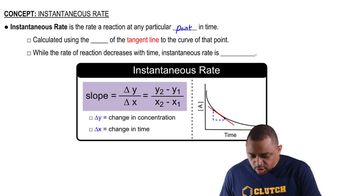Here are the essential concepts you must grasp in order to answer the question correctly.
Radioactive Decay
Radioactive decay is the process by which unstable atomic nuclei lose energy by emitting radiation. This decay occurs at a characteristic rate for each isotope, defined by its half-life, which is the time required for half of the radioactive atoms in a sample to decay. Understanding this concept is crucial for calculating the number of disintegrations and the amount of radioactive material present in a given volume.
Recommended video:
Rate of Radioactive Decay
Disintegration Rate
The disintegration rate, often measured in disintegrations per minute (dpm) or curies (Ci), quantifies the number of radioactive decays occurring in a sample over a specific time period. In this context, the maximum level of radon in drinking water is given in picocuries, which can be converted to disintegrations per minute using conversion factors. This rate is essential for determining the activity of the radon in the water sample.
Recommended video:
Avogadro's Number
Avogadro's number (approximately 6.022 x 10^23) is the number of atoms, ions, or molecules in one mole of a substance. This concept is vital for converting between the number of disintegrations per minute and the number of atoms present in a sample. By using the disintegration rate and the half-life of the isotope, one can calculate the total number of radon atoms in the specified volume of water.
Recommended video:




